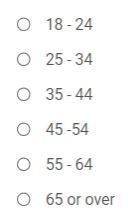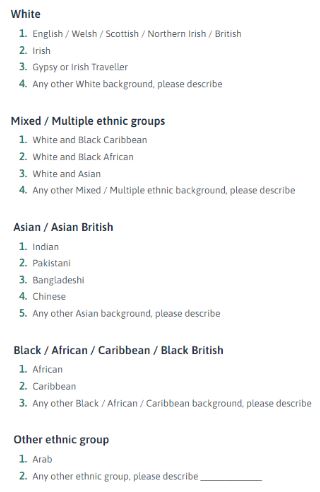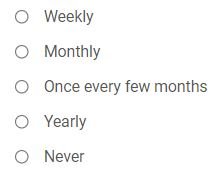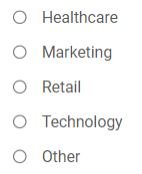Qualifying Questions: Use Cases and Examples

To maximise the validity of your survey data and gain reliable feedback with which to take decisive actions, you need to ensure the right candidates are taking your survey. This is where the value of using qualifying questions, also known as screening questions (or screeners) can pay real dividends for your research and your business.
Essentially the use of qualifying questions ensures only the right candidates take your survey. It achieves this by either qualifying or disqualifying respondents from taking your survey based on their answers to screeners.
However, this process is only as good as the qualifying questions you have provided. So, they need to be as short, clear and simple as you can make them for respondents to answer.
To help you, it can be useful to examine some typical use cases for screeners and how you might word these questions, which we will go on to explore below.
Types of qualifying questions
Depending on the topic and objectives of your survey, you may have a mix of preferences in terms of the criteria of individual you want to answer your questions.
However, generally the most common ways to screen individuals for surveys is based on demographic, behavioural, industry specific or product/service specific criteria.
Demographics
Probably the most common and well-known screening question is the one based on demographics. This can include broad categories such as gender, ethnicity, and age ranges through to more specific socio-economic categories such as level of education, marital status, employment, and household income.
Whether you’re a marketing manager trying to get the views of a key demographic audience on a new product line you want to introduce, or a local council looking to reach out and better understand a specific demographic group. There’s lots of reasons why you might only be looking to survey a particular group of individuals that fits a particular set of demographic criteria.
For example, if you were a manufacturer of an age targeted product such as a stairlift, you might ask the following age-related qualifying question, to ensure only those aged 65 and over took your survey, and you could disqualify anyone else selecting another age group.
"What is your age group?"

Alternatively, if you were a city council issuing a survey to find out more about the challenges faced by a specific ethnic group. You might present them with the following question, which would allow you to qualify the group you wanted to speak to and disqualify those selecting any other ethnic groups from taking your survey.
"What is your ethnic group?"
(Choose one option that best describes your ethnic group or background)

Behavioural
As the name suggests, this qualifying question is more concerned with the behaviours and habits exhibited by different individuals.
For example, if you were an online retailer and wanted to know more about how people shopped for clothes online, so that you could help influence that behaviour, you could use the following set of qualifier questions to help identify your ideal respondent.
"How often do you shop for clothes?"

Having found if they were a regular clothes shopper or not, you could then ask whether their shopping habits extended to online and how often.
"How often do you shop for clothes online?"

With this question, you might decide that you only want to target those the shop frequently, either weekly and monthly and disqualify respondents that select any of the other options.
Industry specific
For business users, using an industry specific qualifier question is a great way of filtering out those who aren’t related to the specific industry you’re interested or working in.
For example, if you worked in the marketing department of a healthcare products company and wanted to gather feedback on some marketing ideas you had for a particular product line, but only wanted comment from those with a marketing and/or healthcare background, you might ask.
"Do you work in any of the following industries?"

Product of service specific
The final demographic screening question you can use is the product or service specific one. This is the type of qualifier question you’ll want to use if you’re looking to target the intended audience for your product or service.
For example, let’s say you ran a Kennels and Cattery business, were thinking about introducing a pet grooming service and wanted to get the views of local dog and cat owners. By asking them the following question, you could ensure only dog and cat owners were allowed to take your survey and anyone else was disqualified.
"What kind of pet do you own?"

Best practices for qualifying questions
Having decided on the types of screening question you want to ask, you’re probably keen to crack on with using them. However, before you do, you need to think about how and when you will ask them, if you’re to get the maximise value from their use. Here are a few things to think about:
Where to place your screeners
Given that the main objective of screening questions is to eliminate unsuitable candidates before they risk damaging the quality of your data, it makes sense to place screeners at the very beginning. This also ensures you avoid any inconvenience to any unsuitable respondents, as well as saving you time during the later data analysis stage.
Where to include page breaks
Skip logic is the smart feature you will need to deploy in order to route your ideal respondents through your survey and disqualify those that aren’t relevant from participating. But if this is to work effectively, you will need to place a page break immediately after your final screening question.
Make sure you use enough screeners
When it comes to qualifying your respondents, don’t be afraid to ask them a few questions, as sometimes it can take more than one question to determine whether they’re right for your survey. This will also help give you more reliable results. However, don’t go overboard with how many you use.
Keep screeners as simple as you can
Try not to use any more than half a dozen answer options for any qualifier question and keep your wording clear and concise. Remember while your screeners are important, they are just the gateway to your most important questions that are in the body of your survey.
Don’t use dichotomous answer options
Ideally, it’s better to avoid dichotomous ‘Yes’ or ‘No’ type answers in your survey, as participants can become prone to acquiescence bias. This is where they choose the most favourable option to seem more agreeable.
Concluding thoughts
If you’re to get the most out of your survey and be able to do something useful with your results, it’s vital that you’re surveying exactly the right audience for your needs.
With our solid overview of qualifying questions, the different types available and when and how best to use them, we hope you’ll be able to devise some strong qualifying questions for your own survey. If you can do this, you’ll be well on the way to generating the feedback you need.


